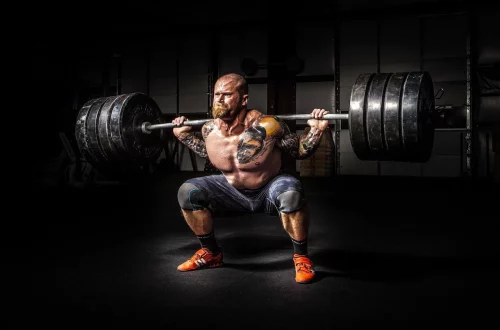
Ultimate Cable Machine Arm Workout for Strength and Definition
Building strength and definition in your arms can be a transformative experience, both physically and mentally. The arms are often one of the most visible signs of fitness, and sculpting them can lead to increased confidence and improved performance in various activities. However, achieving those well-defined biceps and triceps requires a strategic approach to resistance training.
One of the most effective tools for arm workouts is the cable machine. This versatile piece of equipment allows for an array of movements that target different muscle groups while providing constant tension throughout the exercises. Unlike free weights, which can sometimes lead to uneven muscle development, cable machines promote balanced strength and can be adjusted to suit all fitness levels. Furthermore, the ability to change angles and grips makes it easier to hit muscles from various directions, enhancing overall muscle engagement.
Incorporating a cable machine into your arm workouts not only maximizes your muscle gain but also minimizes the risk of injury. With the right technique and workout plan, you can build strength and definition that not only looks good but also functions well in everyday activities. As you delve deeper into the world of resistance training, understanding how to effectively utilize a cable machine will be fundamental to achieving your fitness goals.
Understanding the Anatomy of Your Arms
To effectively target your arm muscles, it is essential to understand their anatomy. The primary muscles in the arms include the biceps brachii, triceps brachii, and brachialis. The biceps are located at the front of the upper arm and are responsible for elbow flexion and forearm supination. On the other hand, the triceps, which comprise three heads—long, lateral, and medial—are found at the back of the upper arm and are crucial for elbow extension.
The brachialis lies beneath the biceps and plays a significant role in elbow flexion. While it may not be as visible as the biceps, developing this muscle can contribute to the overall size of your arms.
When training these muscles, it’s important to include a variety of exercises that target each muscle group effectively. Focusing solely on one muscle, such as the biceps, can lead to muscle imbalances and hinder overall strength development. A balanced workout routine that incorporates both biceps and triceps exercises will not only enhance aesthetics but also improve functional strength.
In addition, understanding the role of stabilizer muscles is crucial. These are smaller muscles that support the larger muscle groups during movement. Engaging these muscles will help improve your overall stability and performance in arm workouts and other exercises.
Effective Cable Machine Exercises for Biceps
When it comes to building biceps using a cable machine, there are several effective exercises to incorporate into your routine. One of the most popular is the cable bicep curl. To perform this exercise, start by attaching a straight bar or rope to the low pulley of the cable machine. Stand facing the machine, grasp the handle with an underhand grip, and step back slightly.
Keep your elbows close to your body and slowly curl the handle towards your shoulders, squeezing your biceps at the top of the movement. Lower the weight back down in a controlled manner. This exercise not only targets the biceps but also engages the forearm muscles, contributing to overall arm strength.
Another effective exercise is the cable hammer curl. This variation emphasizes the brachialis and brachioradialis, adding thickness to the arms. Attach a rope handle to the low pulley and stand facing the machine. Grip the rope with a neutral grip (palms facing each other), and curl the handle towards your shoulders while keeping your elbows stationary. Lower the weight back down slowly and repeat.
Incorporating different angles into your bicep workouts can also enhance muscle engagement. Adjusting the pulley to a high position allows for high cable curls, which target the biceps from a different angle. This variation can be particularly effective for hitting the long head of the biceps, contributing to that coveted peak.
Finally, remember to focus on the mind-muscle connection during your exercises. Concentrate on the biceps contracting and extending, and avoid using momentum to lift the weights. This will maximize muscle activation and lead to better results over time.
Targeting Triceps with Cable Machine Exercises
The triceps are often overlooked in arm workouts, but they play a vital role in arm strength and definition. A well-rounded arm workout should include specific exercises that target the triceps effectively. One of the best cable machine exercises for triceps is the cable triceps pushdown.
To perform this exercise, attach a straight bar or rope to the high pulley of the cable machine. Stand facing the machine, grasp the bar or rope with an overhand grip, and pull it down to chest level. Keep your elbows tucked to your sides and push the bar or rope down until your arms are fully extended. Slowly return to the starting position and repeat. This exercise isolates the triceps, promoting strength and definition.
Another effective exercise is the overhead cable triceps extension. For this movement, attach a rope to the low pulley. Stand with your back to the machine, grasp the rope with both hands, and lift it overhead. Keep your elbows close to your ears and lower the rope behind your head before extending it back to the starting position. This exercise targets the long head of the triceps, which is essential for overall arm size.
Combining these exercises with variations, such as single-arm cable kickbacks, can further enhance your triceps workout. Adjusting the cable machine to perform these movements will allow you to focus on each arm individually, ensuring balanced development.
As with any resistance training, proper form is crucial. Ensure that your movements are controlled and that you are engaging the correct muscles. Avoid swinging or using momentum, as this can lead to injury and diminish the effectiveness of the workout.
Creating a Balanced Arm Workout Routine
To achieve optimal strength and definition in your arms, it’s essential to create a balanced workout routine that incorporates both bicep and tricep exercises. A well-structured workout should include a mix of compound and isolation movements to ensure comprehensive muscle engagement.
Start your workout with compound exercises that recruit multiple muscle groups. For example, you can begin with a cable machine chest press, which also engages the triceps, before moving on to specific bicep and tricep exercises. This approach allows you to maximize your energy on the more demanding lifts before targeting individual muscles.
Aim for 3 to 4 sets of 8 to 12 repetitions for each exercise. This rep range is ideal for building both strength and size. Ensure that you rest for about 60 to 90 seconds between sets to allow for adequate recovery and muscle engagement.
In addition to the exercises discussed, consider incorporating supersets into your workout. A superset involves performing two exercises back-to-back without rest. For example, you can do a set of cable bicep curls immediately followed by a set of triceps pushdowns. This technique increases the intensity of your workout and can lead to greater muscle fatigue and growth.
Lastly, don’t forget to include proper warm-up and cool-down routines. Warming up prepares your muscles for the workout, reducing the risk of injury, while cooling down aids recovery. Stretching after your workout can also improve flexibility, enhancing overall performance in future sessions.
By following these guidelines and consistently challenging yourself, you will not only develop stronger arms but also improve your overall fitness level.
**Disclaimer:** This article is for informational purposes only and is not intended as medical advice. Always consult with a healthcare professional before starting any new exercise program, especially if you have any existing health concerns.




